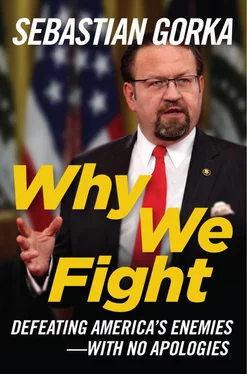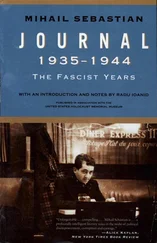As will be seen, my conclusion is that the defendant, Dzhokhar Tsarnaev, identified with, and considered himself to be a part of, the Global Jihadist Movement, and that he executed terrorist attacks in furtherance of and in accordance with the movement’s declared objectives.
This conclusion is based upon the very large library of extremist materials (two thousand-plus pages, as well as numerous audio and video files) in the possession of the defendant, and most importantly, upon documents he himself wrote.
The pivotal such document that clearly indicates Tsarnaev’s conscious identification with the Jihadist Movement is the statement he left in the boat where he was found to be hiding after the Boston Marathon bombings.
The Defendant’s written statement is clearly informed by the jihadist concept of al wala al barra , which stipulates that a Muslim owes no allegiance to, and must not obey the laws of, any political system that is not run by Muslims, and that such un-Islamic systems must be destroyed.
EXPERIENCE
I am the Major General Matthew C. Horner Distinguished Chair of Military Theory at the Marine Corps University, a privately endowed, non-governmental position. I teach and conduct executive research on terrorism, counterterrorism, and the grand strategy of Jihadism.
Prior to taking the Horner Chair, I was on the faculty of the National Defense University for six years, eventually serving as the Associate Dean of Congressional Affairs and Relations to the Special Operations Community. As such, I was part of the International Counterterrorism Fellowship Program of the Department of Defense, which provides graduate-level education and partnership capacity-building to the interagency and US allies and partners involved in the global campaign against al-Qaeda and Associated Movements (AQAM).
For four years before coming to the US, I was on the faculty of the Program for Terrorism and Security Studies at the George C. Marshall Center, US European Command, where I was involved in the counterterrorism education and training of over one thousand counterterrorism and intelligence officers from around the world.
Although I am now a US citizen, when I lived in the United Kingdom, I served in the British Territorial Army’s Intelligence and Security Group (V), which was a reserve military unit with counterterrorism responsibilities.
In addition to my position with the Marine Corps University, I am currently an Adjunct Professor with Georgetown University and an Associate Fellow with Joint Special Operations University, US Special Operations Command (SOCOM). I am a lead instructor for SOCOM’s Special Operations Combating Terrorism Course, and teach on two other SOCOM counterterrorism courses. I am also a regular instructor for the US Army Special Operations Command’s John F. Kennedy Special Warfare Center and School, where I teach the block “Thinking Like a Jihadist Terrorist.” I also teach for the Counterterrorism Division of the FBI on their Joint Terrorism Task Force and Counterterrorism Operations courses, and I am course designer and director for the FBI’s Terrorism: Origins and Ideologies course.
I have published in excess of 180 monographs, book chapters, and journal articles on national security, and terrorism more specifically. These include for Janes Terrorism Monitor and Janes Islamic Affairs Analyst , as well as the Harvard International Review , and Special Warfare , the official periodical of the US Special Forces. I am contributing co-editor of the McGraw Hill text: Toward a Grand Strategy against Terrorism , and have testified before Congress on the global campaign against the Jihadist Movement and have briefed the same topic for the CIA and the Office of the Director of National Intelligence.
My undergraduate degree in philosophy and theology was from London University. I was a post-graduate fellow at Harvard’s Kennedy School of Government and I have a Ph.D. in political science from Corvinus University, Budapest. My dissertation was on the difference between politically- and religiously-motivated terrorism and the consequences for national security policy.
THE EVOLUTION OF THE MODERN JIHADIST MOVEMENT
Jihad is a concept central to the religion of Islam. It can refer to many different activities from striving to live a good life without sin, to martial fighting against unbelievers.
With regard to the latter usage, who constitutes an unbeliever can vary greatly. [1] See Sebastian Gorka: “Understanding History’s Seven Stages of Jihad,” CTC Sentinel , Vol. 2. No. 10, Oct. 3, 2009, Combating Terrorism Center at West Point, available at: https://www.ctc.usma.edu/posts/understanding-history’s-seven-stages-of-jihad .
Historically, the targets of violent jihad have ranged from Arab tribes who rebelled against the early caliphs to the leaders of the Muslim community themselves when they were deemed to be un-Islamic. In the latter instances, when “believers” used force against those who also called themselves Muslims, the principle of takfir was often invoked. Associated predominantly with the scholar Taqi ad-Din A mad ibn Taymiyyah, takfirism is the widespread use of the accusation that a Muslim has, by his or her actions, committed apostasy and is therefore no longer a true Muslim and must be killed.
In the twentieth century, geopolitical events helped catalyze a modernization and reconceptualization of jihad by several key authors and politico-religious leaders employing modern takfirism. This eventually resulted in the establishment of today’s Global Jihadist Movement and terrorist groups such as al-Qaeda.
The Jihadist Movement is inexorably tied to the idea of the caliphate , or the theocratic empire of Islam, that was established by the founder of the religion, Abū al-Qāsim Muhammad ibn ’Abd Allāh ibn ’Abd al Muttalib ibn Hāshim, also known as Mohammad.
The caliphate, which had been established and was then enlarged very rapidly after the founding of Islam, stretching from Southern Spain to Central Asia and beyond, lasted as a politico-religious entity for over a millennium, controlled by different dynasties, and headquartered variously in Mecca, Damascus, Baghdad, and Istanbul.
The caliphate’s most modern version, lasting into the twentieth century, was the Ottoman Empire. This embodiment of the theocratic regime of Islam faced an existential threat after it decided to side with the forces of Germany and the Austro-Hungarian Empire in World War I but then lost the war.
In order to prevent the forcible partition of the whole caliphate, the Ottomans decided to reinvent and reform the Islamic Empire into the modern secularized republic of Turkey under the leadership of Mustafa Kemal Ataturk. The most significant part of the modernization process, from the point of view of modern jihad, was the formal dissolution of the caliphate by the government of Istanbul in 1924.
With the new Turkish government forcibly separating mosque and state in a new secular republic, the loss of the theocratic character of the thousand-plus year old successor entity to the empire would become a cause for violence to those who saw the decision as a triumph of heretical western values over the non-negotiable attributes of Islam.
Most influential among such actors was Hassan al-Banna, the founder of the Ikwaan al Muslimeen , or Muslim Brotherhood (MB). Established in the Suez region of Egypt less than five years after the dissolution of the caliphate, the Brotherhood had as it mandate the re-establishment of the theocratic Empire through subversion of existing local governmental regimes and through Holy War (jihad).
This is best demonstrated by the official motto of the Brotherhood:
Читать дальше












